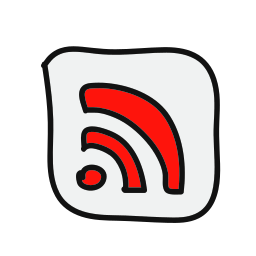In the world of web syndication, RSS (Really Simple Syndication) and Atom are two of the most popular formats used to distribute content from websites and blogs to users. While both RSS and Atom serve the same purpose – to deliver content in a standardized format that can be easily consumed by users – there are some key differences between the two formats. In this article, we’ll explore the differences between RSS and Atom and help you understand which format may be best suited for your content distribution needs.
RSS: A Brief Overview
RSS, or Really Simple Syndication, is a family of web feed formats used to publish frequently updated content such as blog posts, news headlines, and podcasts. RSS feeds are typically generated in XML (eXtensible Markup Language) format and contain metadata about the content, such as the title, author, and publication date. Users can subscribe to RSS feeds using RSS readers or aggregators, which collect and display content from multiple feeds in one centralized location.
Atom: A Brief Overview

Atom is a newer web feed format that was developed as an alternative to RSS. Like RSS, Atom is based on XML and is used to syndicate content from websites and blogs to users. Atom feeds contain similar metadata to RSS feeds, including titles, authors, and publication dates. However, Atom offers some additional features and enhancements compared to RSS, such as support for internationalization and better handling of metadata.
Key Differences Between RSS and Atom:
- Technical Specifications: RSS and Atom are based on different technical specifications, with RSS being developed by Netscape in the late 1990s and Atom being developed by the Internet Engineering Task Force (IETF) in the early 2000s. While both formats serve similar purposes, they have different syntaxes and specifications.
- Namespace Support: Atom supports namespaces, which allow for more flexible and extensible metadata. This means that Atom feeds can contain additional metadata beyond what is supported by RSS feeds, making Atom a more versatile format for content syndication.
- Internationalization: Atom has built-in support for internationalization, allowing for the inclusion of language-specific metadata in feeds. This makes Atom a better choice for websites and blogs that publish content in multiple languages, as it ensures that users receive content in their preferred language.
- Community Support: While both RSS and Atom have active developer communities, Atom is generally considered to have better community support and more active development. This means that Atom feeds may receive more frequent updates and improvements compared to RSS feeds. Read about the 10 main RSS tools in our article.
Which Format Should You Use?
When choosing between RSS and Atom for content distribution, there are several factors to consider. If you’re looking for a simple and widely supported format, RSS may be the best choice for you. RSS feeds are supported by a wide range of RSS readers and aggregators, making them accessible to a large audience.

On the other hand, if you require more advanced features and flexibility, Atom may be the better option. Atom feeds offer support for namespaces, internationalization, and other advanced features that may be beneficial for certain use cases.
Ultimately, the choice between RSS and Atom will depend on your specific needs and preferences. Both formats have their advantages and disadvantages, so it’s important to carefully consider your options before making a decision.
Conclusion
In conclusion, RSS and Atom are two popular formats used for content syndication on the web. While both formats serve similar purposes, they have some key differences in terms of technical specifications, features, and community support. Whether you choose RSS or Atom will depend on your specific requirements and preferences. By understanding the differences between the two formats, you can make an informed decision about which format is best suited for your content distribution needs.
For more information on RSS and Atom, please visit and Atom.


